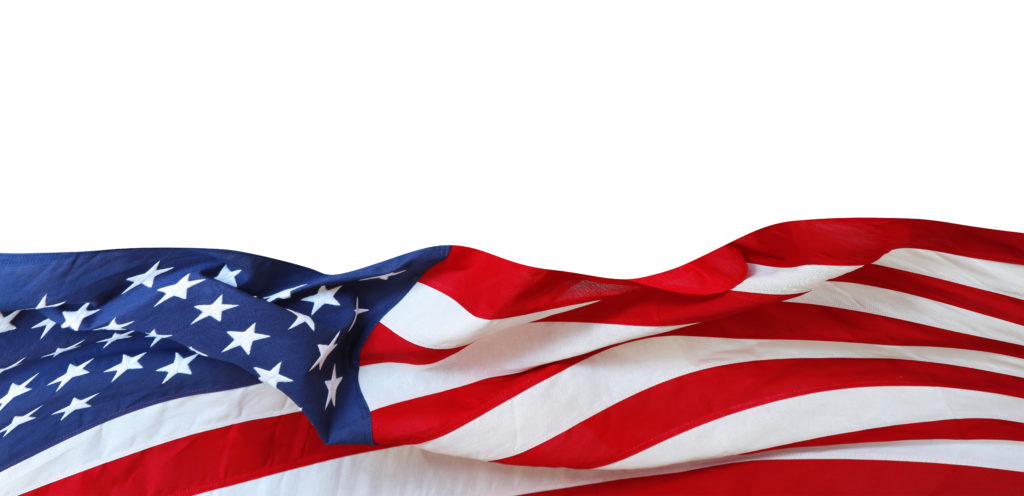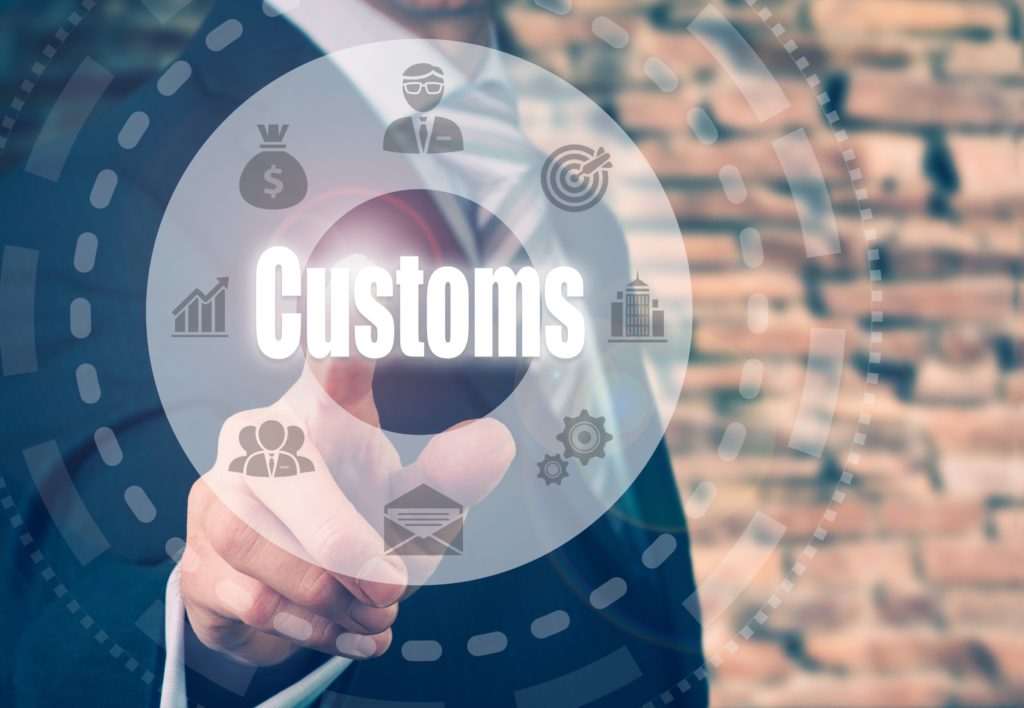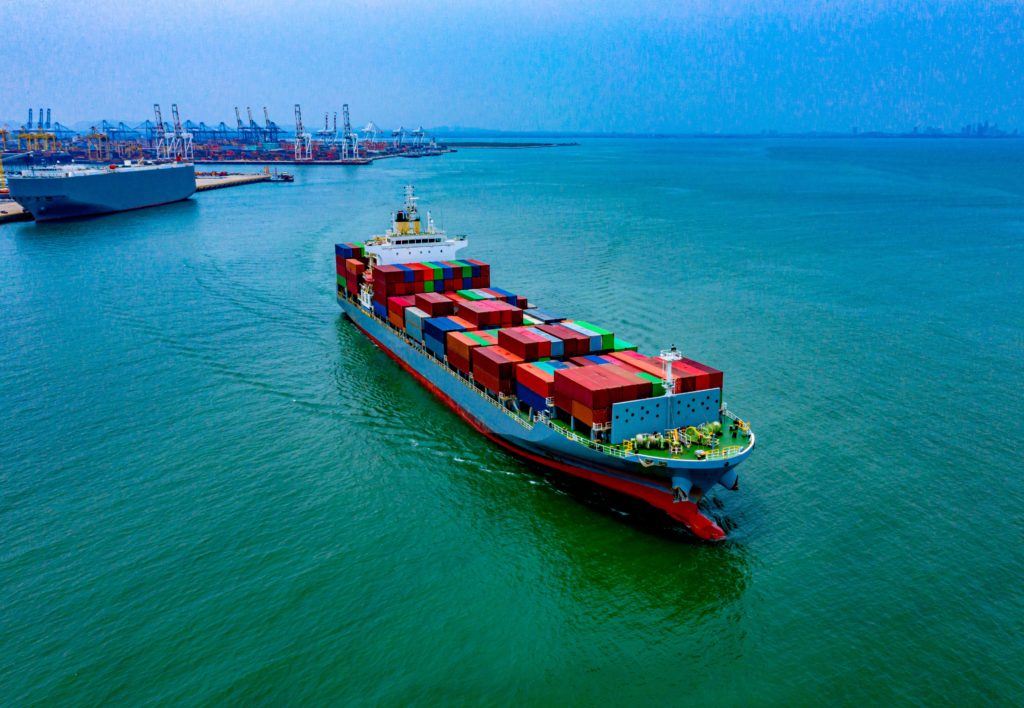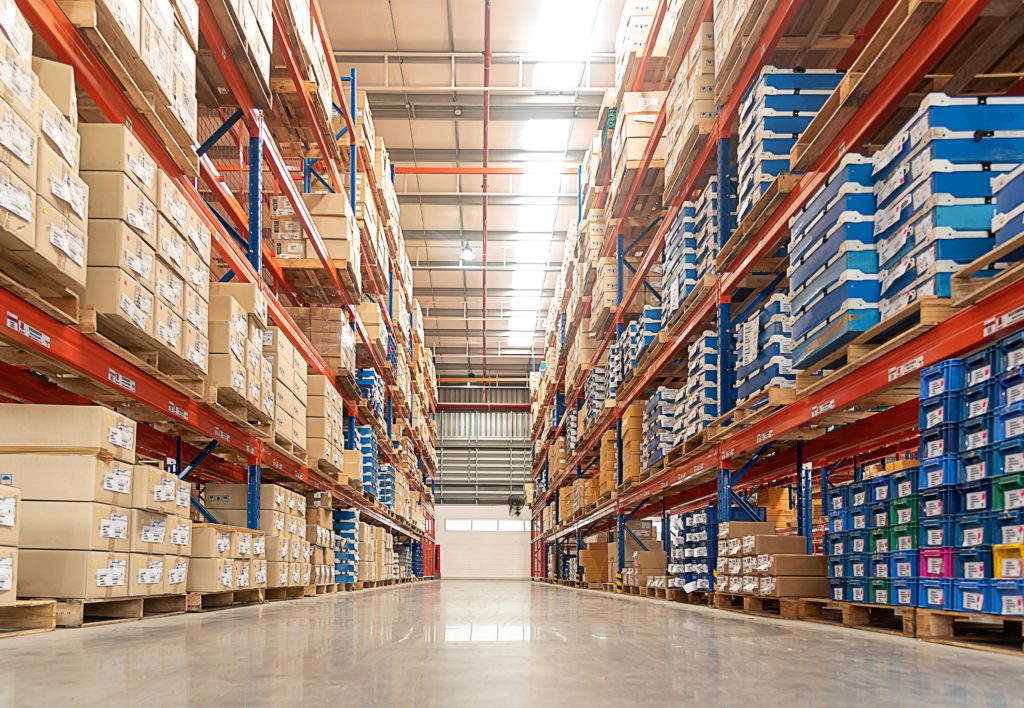Importer Security Filing
Importer Security Filing
Importer Security Filing (ISF) and Additional Carrier Requirements
The Importer Security Filing, commonly known as the “10+2” initiative, is a Customs and Border Protection (CBP) regulation that requires importers and vessel operating carriers to provide additional advance trade data to CBP for non-bulk cargo shipments arriving into the United States by vessel. Under the ISF rule, the “Importer Security Filing (ISF) Importer,” or their agent (e.g., licensed customs broker), must electronically submit certain advance cargo information to U.S. Customs and Border Protection (CBP) in the form of an Importer Security Filing. This requirement only applies to cargo arriving in the United States by ocean vessel; it does not apply to cargo arriving by other modes of transportation. Failure to comply with the ISF rule could ultimately result in monetary penalties, increased inspections, and delay of cargo.
Who is responsible for the ISF filing?
The ISF Importer is required to submit the Importer Security Filing. The ISF Importer is defined as the party causing the goods to arrive within the limits of a port in the United States by vessel. Typically, the ISF Importer is the goods’ owner, purchaser, consignee, or agent such as a licensed customs broker.
However, for foreign cargo remaining on board (FROB), the ISF Importer is the carrier or the Non-Vessel Operating Common Carrier (NVOCC). For immediate exportation (IE) and transportation and exportation (T&E) in-bond shipments, and goods to be delivered to a foreign trade zone (FTZ), the ISF Importer is the party filing the IE, T&E, or FTZ documentation, including the goods’ owner, purchaser, consignee, or agent such as a licensed customs broker.
An importer may designate an agent to file the ISF on its behalf and that agent does not have to be a licensed customs broker, nor does it have to be located within the United States. The regulations do, however, require the agent to retain powers of attorney in English until revoked and require the agent to provide proof of powers of attorney and revocation upon request by CBP.
What data elements must be provided?
For shipments consisting of goods intended to be entered into the United States and goods intended to be delivered to a Foreign Trade Zone, ISF Importers, or their agent, must provide ten data elements and two Additional Carrier Requirements , commonly known as ISF-10 or “10+2”.
For shipments consisting entirely of FROB and shipments consisting entirely of goods intended to be transported in-bond as an IE or T&E, the Importer Security Filing must consist of five elements (known as ISF-5).
In-Depth Coverage: Country of Origin
- Country of Origin of Imported Merchandise
- Customs Ruling: Country of Origin
- Country of Origin: Food Products
- Country of Origin: Chemical and Pharmaceutical Products
- Country of Origin & Country of Manufacture: CBP vs. FDA
- Country of Origin: Substantial Transformation or Country of Assembly Test
- Country of Origin and Free Trade Agreement
- Country of Origin and Section 301
ISF 10 Data Elements
U.S. bound Cargo (Includes FTZ and IT) requires the electronic filing of an Importer Security Filing (ISF) comprised of 10 data elements. ISF Importers, or their agent, must provide eight data elements, no later than 24 hours before the cargo is laden aboard a vessel destined to the United States.
Those data elements include:
1. Importer of Record Number
Internal Revenue Service (IRS) number, Employer Identification Number (EIN), Social Security Number (SSN), or CBP assigned number of the entity liable for payment of all duties and responsible for meeting all statutory and regulatory requirements incurred as a result of importation. For goods intended to be delivered to an FTZ, the IRS number, EIN, SSN, or CBP assigned number of the party filing the FTZ documentation with CBP must be provided.
2. Consignee Number
Internal Revenue Service (IRS) number, Employer Identification Number (EIN), Social Security Number (SSN), or CBP assigned number of the individual(s) or firm(s) in the United States on whose account the merchandise is shipped. This element is the same as the “consignee number” on CBP Form 3461.
3. Seller (Owner)
Name and address of the last known entity by whom the goods are sold or agreed to be sold. If the goods are to be imported otherwise than in pursuance of a purchase, the name and address of the owner of the goods must be provided.
4. Buyer (Owner)
Name and address of the last known entity to whom the goods are sold or agreed to be sold. If the goods are to be imported otherwise than in pursuance of a purchase, the name and address of the owner of the goods must be provided.
5. Ship to Party
Name and address of the first deliver-to party scheduled to physically receive the goods after the goods have been released from customs custody.
In-Depth Coverage: Marketing and Advertising Compliance
- Federal Trade Commission (FTC) Advertising Rules
- Made in USA Standard
- FTC Regulation on Environmental Claims
- Adverting and Marketing on the Internet
- Label Claims for Conventional Foods and Dietary Supplements
- Dietary Supplement Advertising: What is FTC's Truth-in-Advertising Law?
- USDA Country of Origin Labeling (COOL)
- FTC Rules & Regulations on Food Advertisement
6. Manufacturer or Supplier
Name and address of the entity that last manufactures, assembles, produces or grows the commodity or name and address of the supplier of the finished goods in the country from which the goods are leaving.
7. Country of Origin
Country of manufacture, production, or growth of the article, based upon the import laws, rules, and regulations of the United States. This element is the same as the “country of origin” on CBP Form 3461.
8. Commodity HTS-6 Number
The HTSUS number must be provided to the six-digit level. Alternatively, the filer may choose to provide the HTSUS number to the 10-digit level.
Two additional data elements must be submitted as early as possible, no later than 24 hours prior to the ship's arrival at a U.S. port. These data elements are:
9. Container Stuffing Location
Name and address(es) of the physical location(s) where the goods were stuffed into the container. For break bulk shipments, the name and address(es) of the physical location(s) where the goods were made “ship ready” must be provided. The “scheduled” stuffing location may be provided. This may be the same name/address as the manufacturer (supplier). If a “factory load”, simply provide the name and address of the factory.
10. Consolidator (Stuffer) Name/Address
Name and address of the party who stuffed the container or arranged for the stuffing of the container must be provided. For break bulk shipments, the name and address of the party who made the goods “ship ready” or the party who arranged for the goods to be made “ship ready” must be provided. If no consolidator is used, e.g., “factory load” shipments, provide the name/address of the manufacturer (supplier).
In-Depth Coverage: Importing Food Products
- What is FDA Food Safety Modernization Act (FSMA)?
- Prior Notice of Imported Foods
- FDA Food Facility Registration
- Risk-Based Preventive Controls for Human Food
- Risk-Based Preventive Control for Animal Food
- Protect Food against Intentional Adulteration
- What is Foreign Supplier Verification Program (FSVP)?
- What is FSMA Produce Safety Rule?
Additional Carrier Requirements
In addition to the existing carrier requirements pursuant to the 24-Hour Rule, the rule requires carriers to submit a vessel stow plan and container status messages for certain scenarios pertaining to cargo containers destined to the United States.
Vessel Stow Plan: Carriers must transmit the stow plan, via the Automated Manifest system (AMS), secure file transfer protocol or email, so that it is received by CBP no later than 48 hours after the carrier's departure from the last foreign port. For voyages less than 48 hours, CBP must receive the information prior to the vessel's arrival at the first port in the U.S. The stow plan must include the vessel name, vessel operator and voyage number. With regard to each container, the vessel stow plan must also include the container operator and the equipment number, equipment size and type, stow position, hazmat code, port of lading and port of discharge.
Container Status Messages (CSM): CSMs must be submitted to CBP daily for certain events relating to all containers laden with cargo destined for the U.S. by vessel. Carriers must submit a CSM when any of the required events occurs if the carrier creates or collects a CSM in its tracking system reporting that event.
Coded Transactions
CBP has programmed its system to accept 11 different ISF-10 Transaction types. More types may be added as needed.
Transaction type 01: Standard
This transaction type covers the vast majority of commercial shipments.
Transaction type 02: Ship-To/To Order
This transaction type should be used for shipments that have not yet been sold to a buyer in the U.S. This is typically used for commodities shipments (e.g., coffee beans, cocoa, etc.).
Transaction type 03: HHG/PE
This transaction type should be used for all household goods (HHG) and personal effects (PE) shipments. This includes shipments for returning military members, other U.S. government personnel and their families. No bond is required.
In-Depth Coverage: Importing Cosmetics
Transaction type 04: Gov’t & Military
This transaction type should be only used for actual government or military shipments and not the personal effects or household goods of individual government personnel. No bond is required.
Transaction type 05: Diplomatic
This transaction type should be used only by foreign entities entitled to diplomatic immunity. Returning U.S. diplomatic personnel are not entitled to use this transaction type. No bond is required.
Transaction type 06: Carnet
This transaction type covers shipments arriving under a carnet. No bond is required.
Transaction type 07: U.S. Goods
This transaction type is reserved for shipments containing solely U.S. Goods Returned.
Transaction type 08: FTZ Shipments
This transaction type is reserved for shipments going into a Foreign Trade Zone.
Transaction type 09: International Mail
This transaction type is reserved for USPS mail shipments. No bond is required.
Transaction type 10: OCS Shipments
This transaction type is reserved for shipments arriving from a U.S. outer continental shelf point or from vessels operating over a U.S. OCS point (e.g. rigs, derrick barges, seismic vessels).
Transaction type 11: Informal
This transaction type is reserved primarily for low-value shipments where formal entry is not required. No bond is required.
Sub Codes:
1. Section 321 (goods up to $800)
2. Informal (goods under $2,500)
3. 03 General Note 3(e) (goods not subject to the provisions of the tariff schedule)
In-Depth Coverage: USDA-Regulated Products
- Importing USDA-Regulated Food Products
- Import Regulation by USDA Agricultural Marketing Service (AMS)
- Food Products – FDA or USDA Regulated
- Country of Origin Labeling
- Importing Animals, Animal Products, and Biologics into the US
- Importing Meat, Poultry, and Egg Products into the US
- Labeling and Marking of Imported Meat, Poultry, and Egg Products
- USDA National Organic Program (NOP)
- Agricultural Safeguards and USDA Licensing
ISF 5 Data Elements + Additional Carrier Requirement for Transit Cargo
For shipments consisting entirely of FROB and shipments consisting entirely of goods intended to be transported as Immediate Exportation (IE) or Transportation and Exportation (T&E) in-bond shipments, ISF Importers, or their agents, must submit the following five data elements to CBP.
1. Booking Party Name/Address
Name and address of the party who initiates the reservation of the cargo space for the shipment. A widely recognized commercially accepted identification number for this party may be provided in lieu of the name and address. CBP will accept a DUNS number in lieu of the name and address.
2. Ship To Party
Name and address of the first deliver-to party scheduled to physically receive the goods after the goods have been released from customs custody. CBP is looking for the actual deliver to name/address; not the corporate address. If unknown, provide the name of the facility where the goods will be unladen.
3. Commodity HTS-6 Number
The HTSUS number must be provided to the six-digit level. The HTSUS number may be provided to the 10-digit level.
4. Foreign Port of Unlading
Port code for the foreign port of unlading at the intended final destination must be provided. Note: This may be the inland foreign port code for TE in-bond movements. CBP will accept UN LOC Codes and the Bureau of Census “Schedule K” codes.
5. Place of Delivery
City code for the place of delivery must be provided. It is the foreign location where the carrier’s responsibility for the transport of the goods terminates. UN LOC codes and Bureau of Census “Schedule K” codes are acceptable.
In-Depth Coverage: Importing Medical Device
Exemption from Importer Security Filing
Bulk cargo
An Importer Security Filing is not required for bulk cargo. Bulk cargo is defined as homogeneous cargo that is stowed loose in the hold and is not enclosed in any container such as a box, bale, bag, cask, or the like. Such cargo is also described as bulk freight. Specifically, bulk cargo is composed of either:
(1) Free flowing articles such as oil, grain, coal, ore, and the like, which can be pumped or run through a chute or handled by dumping; or
(2) Articles that require mechanical handling such as bricks, pig iron, lumber, steel beams, and the like.
Exemption from 24-Hour Rule: Break Bulk cargo
For break bulk cargo that is exempt from the 24 hour prior to lading timing requirement for 24 Hour Rule purposes, the Importer Security Filing is required 24 hours prior to arrival. Break bulk cargo is defined as cargo that is not containerized, but which is otherwise packaged or bundled.
How will the rule be enforced?
CBP may issue liquidated damages of $5,000 per violation for the submission of an inaccurate, incomplete or untimely filing. If goods for which an ISF has not been filed arrive in the U.S., CBP may withhold the release or transfer of the cargo; CBP may refuse to grant a permit to unlade for the merchandise; and if such cargo is unladen without permission, it may be subject to seizure. Additionally, noncompliant cargo could be subject to “do not load” orders at origin or further inspection on arrival.
In-Depth Coverage: Customs Valuation
ISF Bond Requirement
The ISF Importer or his/her agent may obtain a continuous bond (type 1, 2, 3, or 4) or an Appendix D ISF stand-alone ISF bond (single-transaction or continuous).
The bond amount for the Appendix D (19 CFR Appendix D to Part 113 – Importer Security Filing Bond) stand-alone ISF bonds will be $10,000 for single transaction and $50,000 for continuous transaction. The amount of the ISF bond is not based on the value of the cargo.
Appendix D stand-alone continuous ISF bonds must be submitted to and approved by CBP’s Office of Administration in advance of the filing of an ISF. Once approved, CBP will record the bond information and issue a unique bond identification number. Upon the filing of an ISF, the ISF Importer or his/her agent must denote the usage of the Appendix D stand-alone continuous ISF bond on the ISF by identifying either bond activity code 16 or bond type 8 (continuous) and the importer ID number against which the bond was recorded.
If an agent is submitting an ISF on behalf of another party and the agent posts his own bond, the agent agrees to have his bond charged if there are breaches of obligations regarding the filing.
CBP will accept one bond for the ISF filing and a separate bond for entry. However, if the ISF Importer and the Importer of Record are the same party and the ISF and entry are submitted to CBP via the same electronic transmission (unified filing of entry and ISF), that party must submit one bond that secures both the ISF and the entry. If a unified entry and ISF filing is sent, the bond obligated on the entry cover both the entry and the ISF for both continuous and single transaction bonds.
Certain types of ISF coded transactions will not require a bond to cover the ISF filing requirements. The bond requirements have been waived for the following ISF coded transactions:
Type 3- Household Goods/Personal Effects
Type 4- Government and Military
Type 5- Diplomatic
Type 6- Carnets
Type 9- International Mail
Type 11- Informal Shipments
ISF Submission Type Changes
In some instances, it becomes necessary to change the ISF type from an ISF-5 to an ISF-10 or reversely. For example, a shipment that was going to be immediately exported (IE) to Canada upon arrival into the U.S. is actually sold to a U.S. party instead. The new party would like to enter the goods into the U.S.
In addition to the two basic submission types (ISF10 submission and ISF-5 submission), there are the following four submission types.
ISF submission type 3: ISF-5 submission type is being changed to an ISF-10
CBP has created a process whereby a new ISF-10 may be filed to replace an existing ISF-5. In these instances, a new ISF-10 must be created and ISF Submission Type 3 must be selected to denote that an ISF-10 will replace the existing ISF-5. An active ISF-5 filing must already exist for this shipment against the same bill of lading number (i.e., lowest ACE bill of lading number) in order for this new filing to be valid.
In the scenario described above, the new party who would like to enter the goods into the U.S. instead of immediate exportation to Canada needs to change the ISF-5 to an ISF-10.
In terms of the business process, CBP expects the new ISF-10 to be completed electronically prior to seeking the written permission from the local CBP port director. Accordingly, the ISF-10 transaction number needs to be referenced in the written letter to the local port director as part of the request for the change from a shipment type requiring an ISF-5 to a shipment type requiring an ISF-10.
ISF submission type 4: ISF-10 submission type is being changed to an ISF-5
An ISF-10 filing can be replaced by an ISF-5 filing. In this case, ISF Submission Type 4 will be used to show that an ISF-10 is being changed to an ISF-5. As a matter of policy, there is no requirement to obtain port director approval for these types of changes.
The new ISF-10 may be submitted by the original ISF Importer (or her agent), or by another party who would then be liable for the ISF-10. This submission type change allows a new ISF to be filed after the goods have departed a foreign port and prior to entry release of the goods in the United States.
ISF submission type 5: Late ISF-10
ISF submission type 6: Late ISF-5
The ISF is required at least 24 hours prior to the vessel departure. If the ISF is completed the same day the vessel sails, it will be considered a violation and it can be expected that CBP will issue a claim for an untimely filing. CBP uses the vessel departure date minus 24 hours to measure timeliness.
Importers who are unable to secure a bond after the ISF filing deadline may elect to use the ISF Submission Type 5 (Late ISF-10, No Bond) or ISF Submission Type 6 (Late ISF-5, No Bond). These submission types are subject to change. The use of these ISF submission types is an acknowledgment that the ISF requirements were not met and that the ISF is late. CBP reserves the right to take any and all appropriate actions (e.g., cargo holds and examinations) to enforce the ISF requirements in these cases.
Please note that ISF Importers who already have coverage under existing Type 1, 2, 3, or 4 continuous bonds are not to use these submission types. In addition, CBP monitors the usage of these new ISF submission types and pays particular attention to any entity that attempts to use these submissions more than once.
Liquidated damages for the different late-filing scenarios
ISF bond obligations commence 24 hours prior to vessel departure. The ISF Importer is liable for up to $10,000 per ISF for any of the following reasons:
- Late ISF: $5,000 per late filing, or untimely filing of the ISF update, and/or untimely update to a flexible ISF
- Inaccurate or Incomplete ISF: $5,000 per inaccurate or incomplete filing, which includes failure to update a flexible ISF at least 24 hours prior to vessel arrival, and/or arriving without securing a match to the bill of lading
1. If importing from Virgin Island, American Samoa or Guam, you MUST file ISF
2. If you are importing from Puerto Rico to U.S. or if you are exporting from U.S. to Puerto Rico (NO ISF is need it)
3. If your goods arrived into Canada by vessel and if trucking or railing into U.S. (as long as shipment are associated with bill of lading at AMS) (MUST file ISF)
Quick Link To U.S. Customs & Import Requirements
Customs Clearance and Import Requirements
- Entry of Imported Merchandise
- What is Section 321 Entry?
- What is Automated Commercial Environment (ACE)
- What is an Automated Broker Interface (ABI)?
- Who is Ultimate Consignee?
- What is Non-Resident Importer Program?
- Country of Origin of Imported Merchandise
- What is the Country of Assembly?
- What is the FDA's Country of Manufacture?
- Marking of Country of Origin on U.S. Imports
- What is Customs Bond?
- Reconciliation Prototype and Bond Rider
- Who Needs a Customs Broker?
- What is Customs Ruling Program?
- Classification of Imported Goods
- How is imported merchandise appraised?
- What are Import Quotas?
- What are Trade Remedy Duties?
- Antidumping Duty (AD) and Countervailing Duty (CVD)
- What is Foreign Trade Zone (FTZ)?
- What is Importer Security Filing (ISF)?
- What is Temporary Importation under Bond (TIB)
- What is In-Bond Process?
FDA-Regulated Products and Import Requirements
- What is Food Safety Modernization Act (FSMA)?
- Prior Notice of Imported Foods
- Food Facility Registration
- Risk-Based Preventive Controls for Human Food
- Risk-Based Preventive Control for Animal Food
- Standards for the Growing, Harvesting, Packing, and Holding of Produce for Human Consumption
- What is Foreign Supplier Verification Program (FSVP)?
- Protect Food against Intentional Adulteration
- FDA Regulated Product in Foreign Trade Zone (FTZ)
- Entry Review Process for FDA Regulated Products
- Country of Origin VS Country of Manufacture
- Foods Regulated by FDA or USDA: What is the Difference?
- Label and Labeling Claims for Conventional Food and Dietary Supplements
- What is USDA Country of Origin Labeling (COOL)?
- Import for Export of FDA Regulated Products
- FDA Regulated Products in Personal Baggage or Sending by Mail or Courier
- International Mail Facility (IMF) and FDA Regulation
- Importing Biological Product Regulated by CBER
- Importing Cosmetics and Voluntary Cosmetic Registration Program (VCRP)
- Importing Drugs into the U.S.
- Importing OTC Drugs into the U.S.
- Importing Veterinary Drugs into the U.S.
- Importing Tobacco Products into the U.S.
- Importing Medical Devices into the U.S
- Importing Food Products into he U.S.
- Importing Radiation-Emitting Products into the U.S.
Guidance on customs & logistics solution for traditional and e-commerce importers and exporters
Importer Security Filing (ISF)
An ISF is required when cargo (ocean only) laden on vessel at a foreign port is destined for shipment to the U.S. Under ISF rule, some importing information and details regarding cargo must be transmitted to the CBP at least 24 hours before goods are loaded onto the vessel.
Customs Clearance
All goods imported into the U.S. are required to be declared to CBP. Our customs broker will help you stay in compliance with customs laws and regulations and clear your goods quickly and efficiently with our electronic Automated Commercial Environment (ACE) and Automated Broker Interface (ABI) Single Window System.
Freight Forwarding
Looking for a freight forwarding partner? To move your cargo from its current location through customs to its final destination we will partner with you to find the best way for your business. Whatever your transportation, logistics or customs clearance needs, we will do our best to customize a solution for your needs.
Warehousing & Distribution
Our warehouse facility offers great potential for serving as a regional hub with over 145,000 SF storage capacity close to Los Angeles Airport & Los Angeles/Long Beach Sea port. With our extensive experience in freight services, your import/export cargo will be handled quickly and effectively.
Section 321 Entry
Section 321 entry allows importing free of duty and tax for shipments imported by one person on one day having a fair retail value in the country of shipment not more than $800. We provide our resident and non-resident clients with dedicated ACE eManifest solutions for Section 321 entry of all modes of transportation.
Non-resident Importer Program
If you want to sell your products in U.S. marketplaces, but you are a business owner located outside of the U.S. and do not have an entity or presence in the U.S., you need to be established as a Foreign Importer of Record before your products can be imported into the U.S. We can help you.
E-Commerce
The Internet has made it easy to find and purchase items from almost anywhere in the world. Our e-commerce experts will help you find the right solution for your international transportation, customs clearance, and delivery to your final destination. We also provide value-added repackaging, warehousing and distribution services.
Design your own logistics
To move your cargo from its current location through customs to its final destination we will partner with you to find the best way for your business.
















